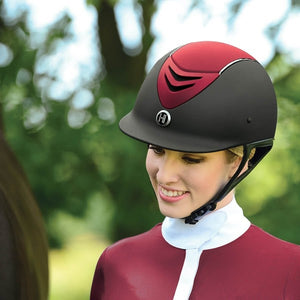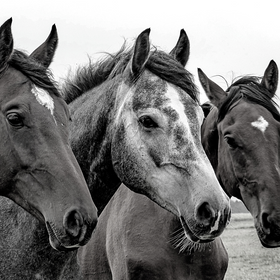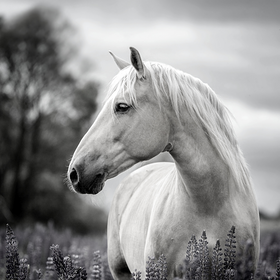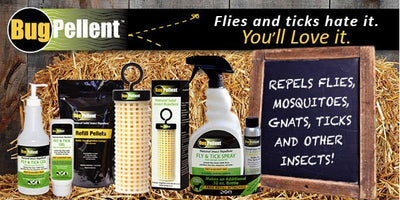
A Beginner's Guide to Horse Bit Types
There are so many resources for different bits — the reason, there are so many to choose from and it can be very confusing, especially for new riders. One of the challenges for bits is some crossover between disciplines and others are specific to one discipline. Different bits are also used for green horses versus fully trained horses that require more subtle cues. We’ve created a general guide to give you a better understanding of bits and their functions. As always, consult your trainer before making a bit adjustment for your horse. Horses can be very sensitive to bit changes, especially if they are early in their training.
Snaffle V. Curb

There are two general functions for bits — snaffle or curb. Snaffles are non-leverage bits and work from pressure, curbs are leverage bits. Snaffle bits (as shown above) generally have a jointed mouthpiece that the reins connect directly to. The horse will feel the same amount of contact that the rider feels on the reins. You will often see snaffle bits for young horses and in english disciplines. There are many different types of snaffle bits, all with a slightly different use, but they all provide the same direct contact with the horse.
- Eggbutt Snaffle: these bits are characterized by the egg shaped connection between the cheek and mouthpiece. They are one of the gentest snaffles because this design prevents pinching where the bit meets the horse’s mouth.
- D-Ring: these bits have a “D” shape cheek piece
- Loose-Ring Snaffle: these bits have a free moving “O” shaped cheek piece. The free movement allows the bit to sit naturally in the horse’s mouth.
- Full-Cheek or Training Snaffles: these distinct bits have full cheek pieces to prevent the bit from being pulled through the horse’s mouth. The full cheek is often used for training young horses who are still learning proper contact in the bridle.

Curb bits (as shown above) have a shank or cheekpiece where the reins attach. This setup gives the rider additional leverage, especially when combined with a curb chain under the chin. The horse will feel more contact than the rider. The longer the shank the more leverage it will provide to the rider. You will often see curb or shank bits in Western disciplines. Curb bits can have a solid or ported mouthpiece. A ported mouthpiece is solid with a raised section in the middle of the bit. A ported mouthpiece works off of the existing leverage provided by the shanks, giving pressure at the roof of the mouth and at the top of the poll. These gently ported shank bits are commonly seen in Western as they allow the rider to give very subtle cues to the horse.
While curb bits are most commonly used in Western disciplines, they are also seen in upper level dressage competitions in a Weymouth or a double bridle.
Mouthpieces
Now that you understand snaffle and curb bit function, mouthpieces are the next component. Mouthpieces can be made from copper, stainless steel, iron and rubber. Many horses will have a preference for both material and mouthpiece type. It may take some experimenting with your trainer to find the right bit for you and your horse.
- Smooth: these are the most common mouthpiece associated with a snaffle bit. The single joint in the center of the mouthpiece works in a nutcracker type action to provide pressure to the sides of the mouth.
- French Link: this mouthpiece is broken into three pieces to conform around the tongue. French links can have flat, round or rolling central pieces.
- Mullen Mouth: a mullen mouthpiece is completely solid from one side of the mouth to the other. This type of mouthpiece will place more pressure on the tongue
- Ported: a ported mouthpiece is solid from one side of the mouth to the other with a raised portion in the middle. The size of the raised portion will vary greatly depending on the discipline and level of training the horse has.





